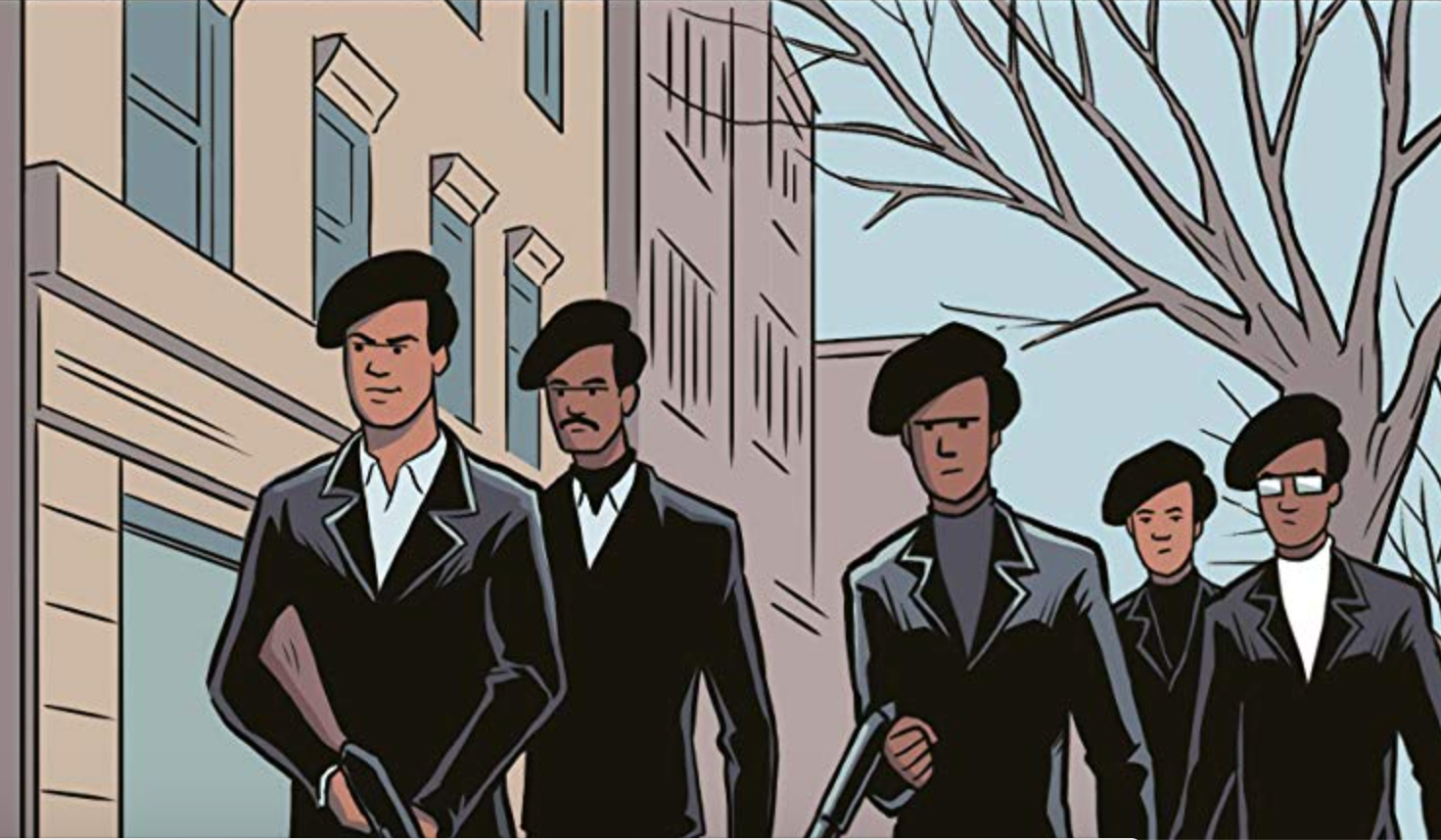interviews
Who Gets to Profit off Black Culture?
Ladee Hubbard's "The Rib King" takes revenge on the cultural appropriation of Black food and iconography

Ladee Hubbard’s sophomore novel, The Rib King, may take place a hundred years ago but it touches on just about every pressing socio-cultural issue in the zeitgeist. The book deftly examines the theft of Black genius, entrepreneurship, and art, through its central character, the indelible August Sitwell, whose prim and proper countenance is swiftly replaced by a well-earned streak of vengeance. A groundskeeper for a white midwestern household in the early 1900s, Mr. Sitwell possesses an unusual olfactory gift. He can identify all of the ingredients in a dish by simply smelling it. A white businessman takes notice and sees a potential for profit. When Mr. Sitwell is then backed into a corner, he’s forced to enter into a business deal that places his racialized likeness on a label for a sauce he created.
While reading The Rib King, one can’t help but recall Bon Appetite’s refusal to adequately compensate food writers of color for their video series, Test Kitchen. Or the calls for John T. Edge, the white founding director of the Southern Foodways Alliance, to step down. Or corporations’ long overdue jettison of racially stereotyped brands like Uncle Ben’s and Aunt Jemima. The Rib King strikes a nerve, and in the process, delivers a dazzling story that navigates the fine line between revenge and justice.
Anjali Enjeti: Where did your interest in exploring special talents or powers, and having them shape your stories, come from?
Ladee Hubbard: That element of The Rib King is an effect of its specific origins. The Rib King, as a character, was initially mentioned in my previous novel, The Talented Ribkins, as the deceased patriarch of the Ribkins family, making this book a prequel.
The Talented Ribkins evolved from my interest in the cultural impact of W.E.B. Dubois’ essay, “The Talented Tenth,” published in 1903. The essay is about the need to cultivate and educate a Black leadership class and posits that 1/10 of the Black population is born with the innate talent that, if properly trained, will make them naturally fit to assume this leadership role.
In The Talented Ribkins, I gave the characters “talents” that are physically manifested, a part of their tangible reality as opposed to being an abstract potential. They struggle with themselves and each other about how to put these talents to good use, thereby troubling the idea of “talent.” I think it was easier to represent the limitations of the concept that way, as well as the specific pressures brought to bear on the characters themselves.
AE: The book feels so timely for so many different reasons. It could have been set in the present day, but you set it in the early 1900s. I’m curious about what drew you to that time period.
LH: The book was written in reaction to current events and my desire to draw links between the past and the present. I began writing it while I was still working on the first novel, right around the time the Black Lives Matter hashtag first emerged in response to the acquittal of the man who murdered Trayvon Martin. The specific vulnerability of African American children to racial violence influenced the development of the plot. As a mother of a teenager, the fact that Trayvon Martin was a child was stark, as was the fact of how obscure this aspect of their deadly confrontation was in many media accounts. More broadly, I was struck by how disturbing it was that we were still grappling with many of same social tensions as 100 years ago—namely, the fundamental difficulty to respect the rights of African Americans as equal citizens.
AE: The Rib King is an important conversation about how white people profit off of Black images and iconography. Aunt Jemima and Uncle Ben brands have been recently redesigned, but other brands and professional sports teams, like the Atlanta Braves, are still putting up a fight. How do you hope this book will advance the conversation on the theft of likeness?
LH: On a fundamental level, it all seems to go back to a tendency to identify nonwhite people with commodities, which is what Black people literally were prior to emancipation.
In terms of advancing a conversation, I think it would be enormously helpful to strive for a level of honest reflection about the persistent appeal of these icons, to really address their origins and what they say about the society we live in and its values. Whose likenesses are they really?
AE: This is such an important point—the images never did resemble any real people, just grotesque stereotypes. What’s interesting to me, is that despite the fact that there are far greater representation and visibility of nonwhite races in positions of power (certainly more than when The Rib King takes place) our society still clings to these images and reproduces them. Is it fair to say that representation alone will not solve the issue of the widespread dissemination of stereotypes? Is more representation the panacea or is it simply one part of the equation?
It all seems to go back to a tendency to identify nonwhite people with commodities, which is what Black people literally were prior to emancipation.
LH: I think it is part of the equation. It wasn’t too long ago that people were describing the U.S. as post-racial in part because of the greater visibility of certain, individual nonwhites in power. Images of Black people who had “made it,” who had money and power, were held up as proof that race was no longer an obstacle to success, an idea which, on the level of representation, culminated with the election of our first Black president. I think that what has followed Obama’s time in office proves that the issues mediating the persistent saliency of Black stereotypes, the persistence of racism and its very real repercussions, are far deeper than that.
AE: The theme of cultural appropriation in The Rib King has been a hot topic the past few years especially in the food industry, though it’s oftentimes misunderstood and discussed with disdain. Why do you think there’s still so much resistance when it comes to understanding and acknowledging the harm of cultural appropriation?
LH: Since it’s systemic, it is a difficult problem that requires conscious and dedicated commitment to confront. There is a deep-rooted pattern whereby many peoples’ cultural productions are not recognized as culture but are instead regarded as raw materials that do not truly acquire value until after they have been appropriated, as if appropriation itself were a form of refinement and acculturation. I think it is important to recognize how deeply this type of thought and behavior has impacted the history of this country as a whole. Certainly, the history of enslavement and colonialism made cultural appropriation—and the right to profit from appropriation—a habitual gesture of racial entitlement.
AE: There is a very dark, sudden turn in the novel, one that shifts the narrative in the complete opposite direction of where I expected it to go. The Rib King defies formulaic kinds of storytelling – it’s one of the reasons why the book appealed to me so much. How do we as readers and writers nurture and encourage different forms of storytelling? How do we help these types of books be discovered?
People were describing the U.S. as post-racial in part because of the greater visibility of certain, individual nonwhites in power. Images of Black people who had ‘made it’ were held up as proof that race was no longer an obstacle to success.
LH: I think it is important to have and cultivate outlets that can highlight and provide access to a broader range of work that is being done both in the United States and outside of it. There are a lot of really good stories that may be considered unconventional because people are not aware of them, because of the clear tendency for some types of stories and cultural perspectives to be promoted and celebrated over others. Different forms of storytelling are often marginalized, as are different types of storytellers whose voices are not always acknowledged as being of value and so are ignored.
AE: And it seems that the search to publish more nontraditional forms of storytelling might need to be more intentional. I’m wondering if you think part of the publishing industry’s reliance on expected/traditional/formulaic forms of storytelling has anything to do with the fact that, compared to other countries, we publish so few books in translation here.
LH: Yes, I do think so. A certain amount of disconnect from other parts of the world makes many things seem “new” when they in fact aren’t. And yet it is important to engage with other parts of the world– both within and outside of the United States. People cannot participate in a wider dialogue if they do not even know that dialogue is going on because there is no reference to it available in a language they can understand.
AE: We’ve seen a lot of big changes in the publishing industry over the past year, including the appointments of Black women to high positions at major publishing houses. Is the publishing industry finally reckoning with itself? Do you think these changes will be long-term? What more needs to be done?
The history of enslavement and colonialism made cultural appropriation—and the right to profit from appropriation—a habitual gesture of racial entitlement.
LH: I hope so! I certainly think it is important and am encouraged by the current push for more diversity in publishing—I hope to see a lot more. At the same time, like the question above, I think a lot of the problems are systemic and therefore not dependent on the actions of any one person.
AE: And it seems to also depend on sustainability. I worry that too many people in power see members of marginalized communities in certain positions of power, and then think, “Oh, okay, we did X, Y, Z, so now we’re done.” Is there a risk, do you think, in becoming complacent—in folks thinking change is finite, instead of continuing to themselves accountable and push to do better?
LH: Again I would note that the Trump presidency was preceded by several decades of assertions that the U.S. was a post-racial society. I know many people recognized this as a falsehood, but the diffusion of that idea did seem to breed a lot of complacency and confusion that was very harmful to efforts to actually address the myriad implications of the persistence of racism in our society. If nothing else, I would hope that what this country had gone through over the course of the past few years has demonstrated the seriousness of the issue, the gravity of the stakes and the extent to which they will require persistent, active commitment on the part of all people who actually care about these issues in order to overcome them.
AE: After a string of police and vigilante killings of Black people, including Ahmaud Arbery, Brionna Taylor, and George Floyd, a number of Black-authored books entered and stayed on bestselling lists. I’ve been wondering, in light of a very close presidential race, whether you think these sales actually reflect a better understanding of racism and anti-racism. Have non-Black people made any progress? Or is what’s happening now purely performative?
LH: It’s not really for me to say whether it is performative or not.
Aunt Jemima has been sitting on the shelf for over 100 years. I am cynical and so suspect that company executives tend to only really listen when they believe that not doing so is affecting their bottom line.
At base I think the answers to all these questions—about appropriation, valuing a more inclusive range of stories and cultural perspectives, whether or not current interest in understanding racism is a performative gesture—at this current moment, ultimately circle back to the significance of public protests. I have a hard time believing that institutional changes happen from within unless people demand those changes or else they would have happened a long time ago. Aunt Jemima has been sitting on the shelf for over 100 years. I am cynical and so suspect that company executives tend to only really listen when they believe that not doing so is effecting their bottom line.
AE: Yes, public protest seems to be crucial. It seems that over the last four years, especially the last year, protest has become a more common and widespread activity in the U.S. Is this a new era for protest?
LH: I hope so. Right now it seems pretty clear that real change will require sustained, committed resistance—of both thought and action—to the stunning inertia of complacency.









